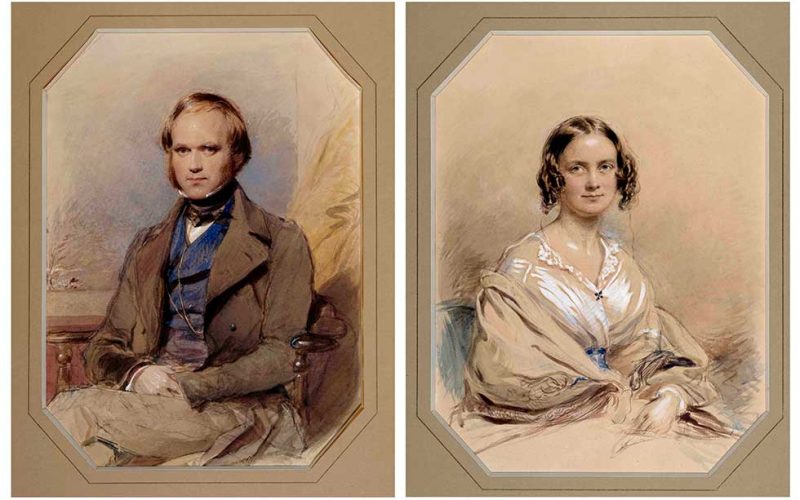“A man who dares to waste one hour of time has not discovered the value of life.” —Charles Darwin
I.
In the 2009 film Creation, Charles Darwin (Paul Bettany) struggles with writer’s block, suffers from stomach pains, and mourns the death of his beloved daughter. He stares for days at a pile of parchment.
Finally, his quill flies across the pages. As autumn turns to winter, he lovingly ties each completed chapter with red string and stores it on his bookshelf. Sometimes he breaks to walk in the snow or consult his travel journal or tell his children a bedtime story about The Giant Sloth of Punta Alta:
“Millions and millions of years ago in a rich and verdant land now called Argentina, there lived a mammal as large as an elephant, as gentle as a lemur, and as slow as an incredibly slow snail. And he lived a happy life watching the slow green march of the passing seasons…”
And then, one morning, it’s finished. Charles enters the drawing room where his wife Emma (Jennifer Connelly) plays a Chopin concerto. He sets the manuscript in front of her and says, “You decide.”
“About what?” She eyes the mountain of parchment.
“What should be done with it,” Charles replies. “Someone needs to take God’s side in all this and I much rather it was you.”
“Supposing I think it should be destroyed?”
Charles doesn’t hesitate. “Then you must do what you think is right.”
Emma reads late into the night. Charles paces their bedroom. Emma drinks more tea and lights another candle. Charles climbs into bed and tries to read. As she turns the pages, Emma purses her lips. She clearly understands the manuscript’s import for herself—and for the world.
At sunrise, Charles jerks awake to the smell of smoke. He moves to the window. His book clunks to the floor. He sees Emma setting fire to a pile of leaves and dashes into the yard.
“Well,” she jabs the pile with a branch, “you said it was my decision.” Charles stares at the flames, stricken.
Emma turns toward the house. Charles runs after her. “Emma!”
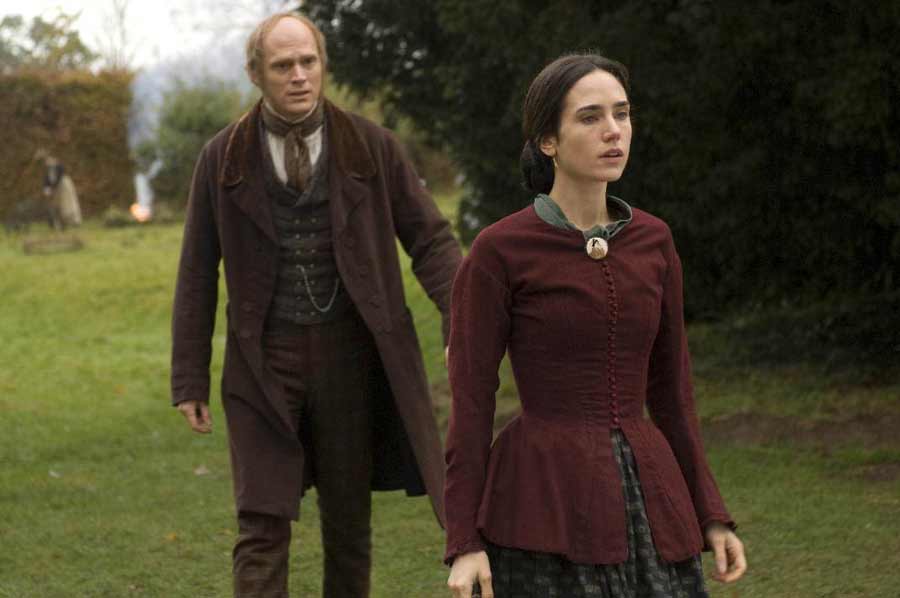
It’s a beautifully-acted scene that probably never happened. But its heart remains true.
Emma, a devout Unitarian, was Charles Darwin’s most trusted editor. She corrected his grammar and spelling and questioned his weaker arguments, even when they countered her beliefs.
But more, she honored the source of his being. On the Origin of Species was a love song Charles needed to publish and Emma, the love of his life, understood.
To suppress the book would destroy what defined him—his wonder.
Wonder and curiosity for all living things, no matter how lowly. Worms, beetles, barnacles and the rest—Charles loved them all. Through more than two decades of ill health and heartache, he stayed faithful to this source.
At age 50, Charles Darwin became the late-blooming author of an idea that rocked the world.
II.
Biographers have long-speculated why Charles took so long to publish Origin.
They’ve cited fear of upsetting Emma, religious persecution, and damaging his reputation. Ernst Mayr, a leading evolutionary biologist, called those two decades Charles Darwin’s “incredible procrastination.”
But perhaps Charles didn’t delay. Perhaps he published at exactly the right time.
As a boy, Charles must have felt a tremendous pressure to succeed at something. His grandfathers, Dr. Erasmus Darwin and Josiah Wedgwood, were renaissance men—poets, artists, inventors, and philosophers, not to mention successful entrepreneurs. They met through the Lunar Society, a science supper club that met at each full moon.
When Wedgwood needed a financial partner to expand his pottery firm, Darwin stepped in. The arrangement made both men very wealthy. By 1790, they sold Wedgwood china to every city in Europe.

Much to their delight, two of their children, Robert Darwin and Susannah Wedgwood, fell in love. Robert and Susannah had six children, including the irrepressible Charles Robert Darwin, born February 12, 1809, the same day as Abraham Lincoln.
Charles spent his childhood ranging over the English countryside near Shrewsbury, rat-catching, collecting birds’ nests, and hunting with his dogs. His older sisters tried to homeschool him without much success. He attended boarding school but gave such a poor showing that his father yanked him at age 16.
At wit’s end, Robert Darwin dispatched Charles to the University of Edinburgh Medical School, where his older brother studied.
Charles loathed med school. The operating theater horrified the sensitive teenager. After witnessing two bloody surgeries, one on a child, he ran out of the building, never to return,
“…for hardly any inducement would have been strong enough to make me do so; this being long before the blessed days of chloroform. The two cases fairly haunted me for many a long year.”
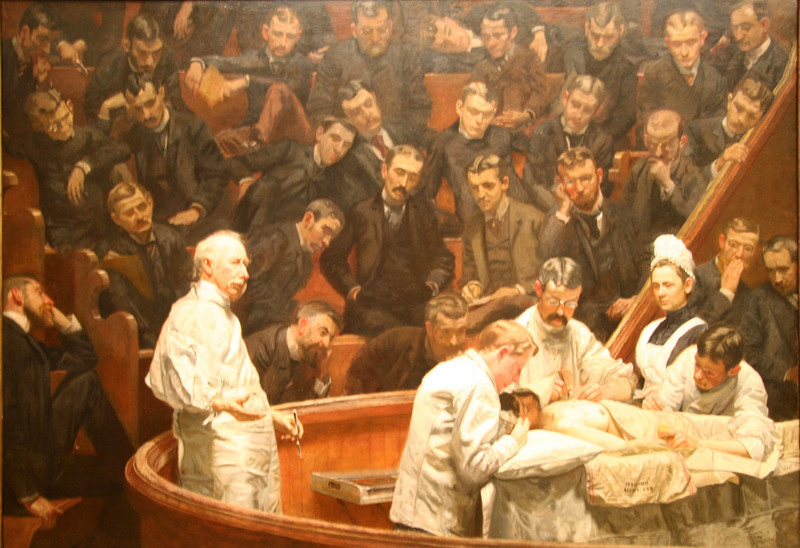
Instead, Charles combed tide pools with his zoology professor, attended natural history club lectures (where he heard John James Audubon speak), and spent afternoons with taxidermist John Edmonstone, a freed slave, whom he greatly admired. “The school as a means of education for me was simply a blank,” he later wrote.
Robert Darwin discovered Charles’s truancy and gave him an ultimatum. Go to Cambridge and study for the clergy or be cut off for good.
At Cambridge, Charles struggled through his required Classics and mathematics courses but excelled in botany and zoology. He’d finally found his tribe. Beetle collecting became his passion:
“One day, on tearing off some old bark, I saw two rare beetles, and seized one in each hand; then I saw a third and new kind, which I could not bear to lose, so that I popped the one which I held in my right hand into my mouth. Alas! it ejected some intensely acrid fluid, which burnt my tongue so that I was forced to spit the beetle out, which was lost, as was the third one.”
Botany professor John Henslow mentored Charles and inspired him to a “burning zeal to add even the most humble contribution to the noble structure of natural science.” Still, Charles graduated from Cambridge without distinction. He embarked on a geological tour of Wales to postpone taking Holy Orders.
When he returned, a letter awaited him. Professor Henslow had recommended Charles as naturalist on the HMS Beagle’s five-year mission to South America.
The only problem—Charles would have to pay his way, which meant asking his father for money. Robert Darwin had just put his son through six years of college. He refused to finance the trip.
But he left a loophole. Robert Darwin told Charles, “If you can find any man of common sense, who advises you to go, I will give my consent.”
Charles knew just the man—his uncle, Josiah Wedgwood II. Robert Darwin deeply admired his brother-in-law, who ran Wedgwood Pottery, served as Member of Parliament, and sponsored a poet named Samuel Taylor Coleridge.
Charles rode like the wind for Maer Hall, the Wedgwood seat in Staffordshire. Uncle Josiah needed no convincing. He thought the Beagle voyage a grand opportunity and wrote a point-by-point letter refuting Robert Darwin’s concerns. Once convinced, his father became Charles’ biggest supporter.
Uncle Josiah’s clincher: “Natural History is very suitable to a clergyman.”
Charles had another reason to visit Maer Hall in person—his pretty cousin Emma. Like many in the Darwin-Wedgwood clan (except Charles, according to his father), Emma was a prodigy. She read Milton’s Paradise Lost at age five and took piano lessons from Chopin.
Unfortunately, he had little time to see her during this particular visit. But maybe when he returned…
Little did he know his two-year voyage would last for five years.
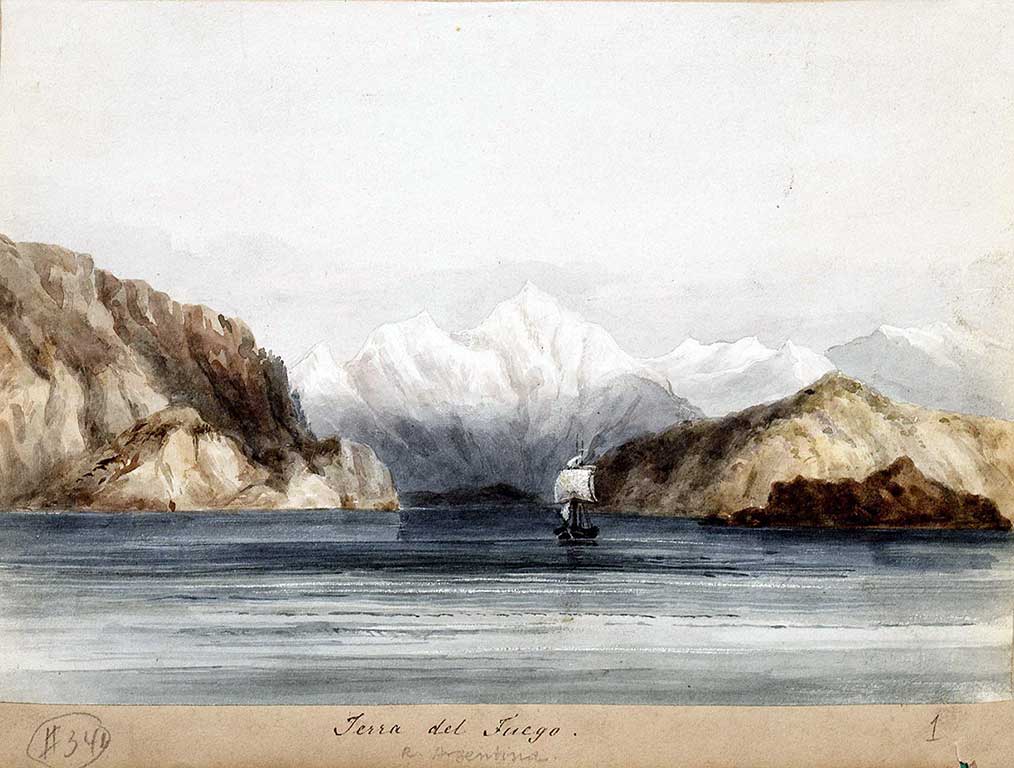
by Conrad Martens, ca. 1834
III.
Charles Darwin set sail on December 27, 1831.
Despite constant seasickness, his sense of wonder took him to locales most English gentlemen would shun. The Beagle voyage honed his wonder into brilliance and perhaps even genius.
In Patagonia, he rode with gauchos and excavated fossil bones, including his famous Giant Sloth of Punta Alta. In Peru, he scaled the Andes and discovered the remains of an ancient sea where shells and trees lined a sandy beach.
In Brazil, he traversed the rainforest, enchanted by each living thing. He declared,
“The delight one experiences in such times bewilders the mind. If the eye attempts to follow the flight of a gaudy butterfly, it is arrested by some strange tree or fruit; if watching an insect, one forgets it in the strange flower it is crawling over…The mind is a chaos of delight.”
After five years, Charles returned to England a changed man—in more ways than one. He would suffer bouts of fever, vomiting, and stomach pain for the rest of his life. The cause remains a mystery, but experts have theorized about malaria and parasites.
In the Galapagos, Charles saw individuals of the same species differ from island to island and wondered what it meant. He sent his Beagle specimens to various specialists searching for answers.
Ornithologist John Gould reported that the “blackbirds” Charles had given him were actually “a series of ground Finches which are so peculiar [as to form] an entirely new group, containing 12 species.”
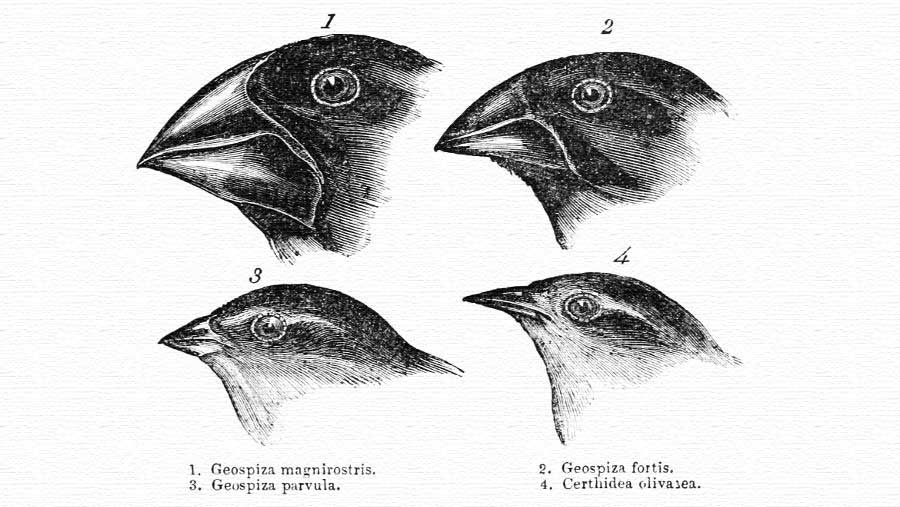
Charles began to suspect that species could change—drastically. In June 1842 he wrote an abstract of what he called his “species-work.” In 1844, he expanded it to 230 pages. Then he put it in a drawer for fifteen years. Why?
Like many young men about to turn 30, Charles pondered his mortality. He’d just become a minor celebrity through the publication of his travel notebooks. His vivid language and sense of wonder made The Voyage of the Beagle a bestseller. Robert Darwin, convinced Charles had found his vocation, gave him free access to his trust fund.
Over six feet tall, with gray eyes and a disarming smile, Charles suddenly became London’s most eligible bachelor. He took his new status seriously.
At the time, three daughters of a prominent geologist, Leonard Horner, courted Charles simultaneously. The Horner girls were clever, literate, and could joke with him in Maori. But as a group, they could be overwhelming. He also realized he couldn’t confine himself to geology. He needed someone who understood his fascination with beetles and bird beaks.
Charles kept roaming back to Maer Hall, home of his defender Uncle Josiah, where art, music, and freethinking ruled. During the holidays, he and his cousin Emma finally had an intense chat (then called a “goose”), before the fire.
After a few more holiday gooses, Charles knew he was in love with Emma. Perhaps he’d always been. To her complete surprise, he proposed. Later she wrote her Aunt Jessie, “…though I knew how much I liked him, I was not the least sure of his feelings, as he is so affectionate, so fond of Maer and all of us.”
When they confided their intentions to Emma’s father, he wept “tears of joy.”
(In England at the time, marriage between cousins wasn’t unusual. In fact, Queen Victoria married her first cousin.)
Charles feared his species-work would clash with Emma’s deep Christian beliefs. But the intelligent and open-minded Emma, a reader of Milton and student of Chopin, knew he was a good and moral man. “My reason tells me that honest & conscientious doubts cannot be a sin…I thank you from my heart for your openness with me,” she reassured Charles.
Charles and Emma’s marriage was happy and fruitful. They raised eight children—William, Annie, Henrietta, George, Elizabeth, Francis, Leonard, and Horace—and communicated about faith their entire lives. Charles kept each letter.
In one Emma expressed fear that he might not join her in the afterlife: “Every thing that concerns you concerns me & I should be most unhappy if I thought we did not belong to each other forever.”
Charles wrote in the margin: “When I am dead, know that many times, I have kissed and
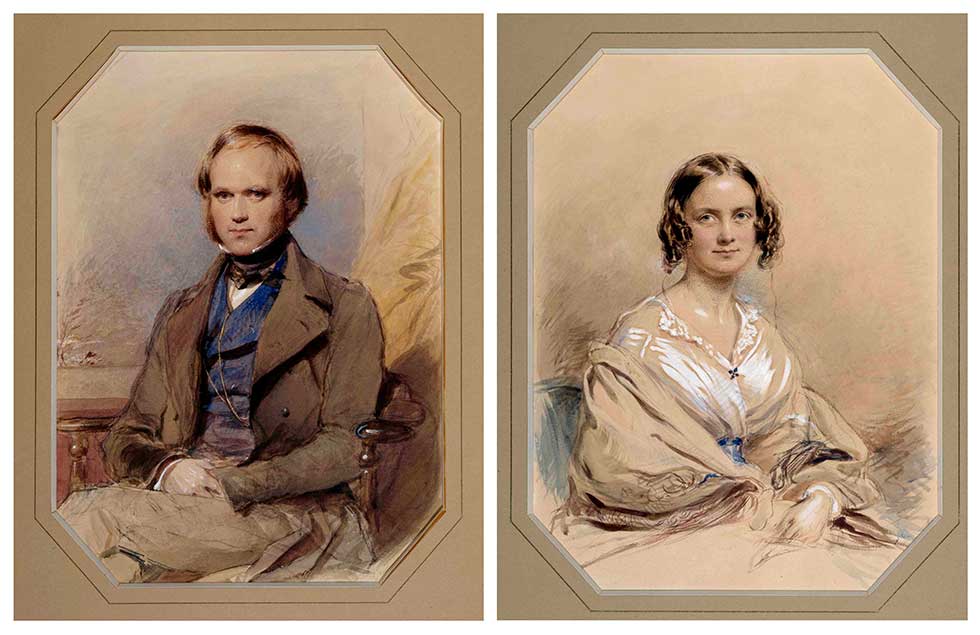
IV.
After their wedding, Charles continued to catalog and publish his Beagle findings. He worked on the barnacles alone for eight years. One day his youngest son Lenny asked a neighbor boy, “Where does your father do his barnacles?” He naturally assumed all fathers collected arthropods.
In 1851, Charles and Emma’s oldest daughter Annie passed away at age 10, probably from tuberculosis. She was her father’s muse, an easy-going child who often kept him company while he worked.
Charles had taken Annie to a specialist in Malvern, but he’d been unable to save her. Emma, heavily pregnant, stayed with their other children. Charles broke the heartbreaking news,
“We have lost the joy of the Household, and the solace of our old age:— she must have known how we loved her; oh that she could now know how deeply, how tenderly we do still & shall ever love her dear joyous face. Blessings on her.”
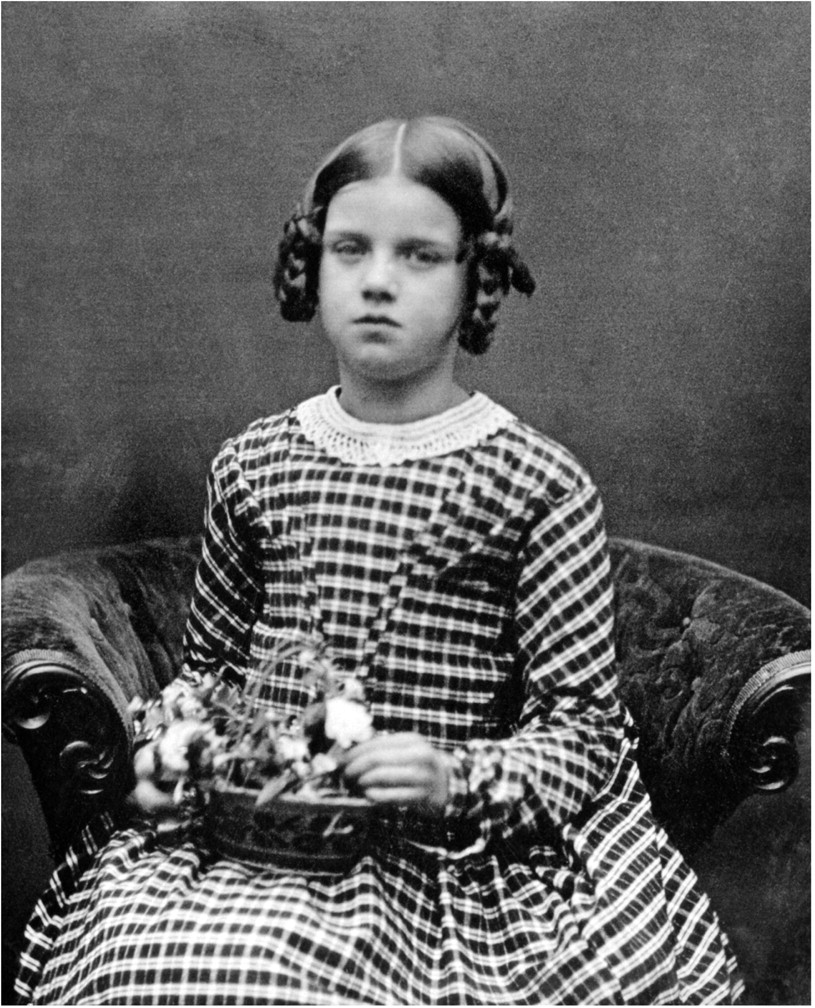
Emma experienced premature labor pains but, thankfully, they stopped. Twenty days after Annie’s death, on May 13, 1851, she gave birth to her fifth son, Horace. The new baby comforted the bereaved family, but months passed before they experienced a semblance of normality.
Charles finally returned to his species-work, corresponding with other scientists about his “big species theory.” Botanist Joseph Hooker and geologist Charles Lyell (who’d married one of the Horner girls) became avid supporters. Both urged him to publish it.
But Charles had another of his stomach attacks. “All last autumn and winter my health grew worse and worse: incessant sickness, tremulous hands, and swimming head. I thought that I was going the way of all flesh.”
Then, on June 18, 1858, seven years after Annie’s death, he received a portentous letter from a young naturalist and fan of his Beagle publications. Charles and Alfred Russel Wallace had corresponded for years. But this time, Wallace enclosed a paper that echoed Charles species theory.
In a classic example of “simultaneous invention,” the cosmic synchronicity that heralds many of the world’s great ideas, Charles had been upstaged.
Or had he? At that moment, he didn’t care.
He and Emma had three children at death’s door. Henrietta and their newest baby, 18-month-old Charles Waring, had contracted scarlet fever. Young George was sick with the measles.
Charles sent Wallace’s paper to his loyal friends Hooker and Lyell. He asked them to handle the situation for him and make sure they treated Wallace fairly.
On July 1, 1858, Hooker and Lyell presented Charles Darwin and Alfred Wallace’s papers to the Linnaean Society, giving both men credit for what became the theory of evolution.
On the very same day, Charles and Emma buried their “poor dear baby” Charles Waring. They spirited the rest of their brood away from the epidemic while they nursed Henrietta.
When the children were well enough to travel, the exhausted family retreated to the Isle of Wight. Charles threw himself into his work. After incubating his species theory for over two decades, he expanded it to book length in thirteen months.
After all they’d endured together, it’s not hard to imagine Charles entering the drawing room that morning while Emma played Chopin.
He places the manuscript in front of her and says, “You decide.”
“About what?” She eyes the mountain of parchment.
“What should be done with it,” Charles replies. “Someone needs to take God’s side in all this and I much rather it was you.”
“Supposing I think it should be destroyed?”
Charles doesn’t hesitate. “Then you must do what you think is right.”
On November 24, 1859, John Murray published On the Origin Of Species.
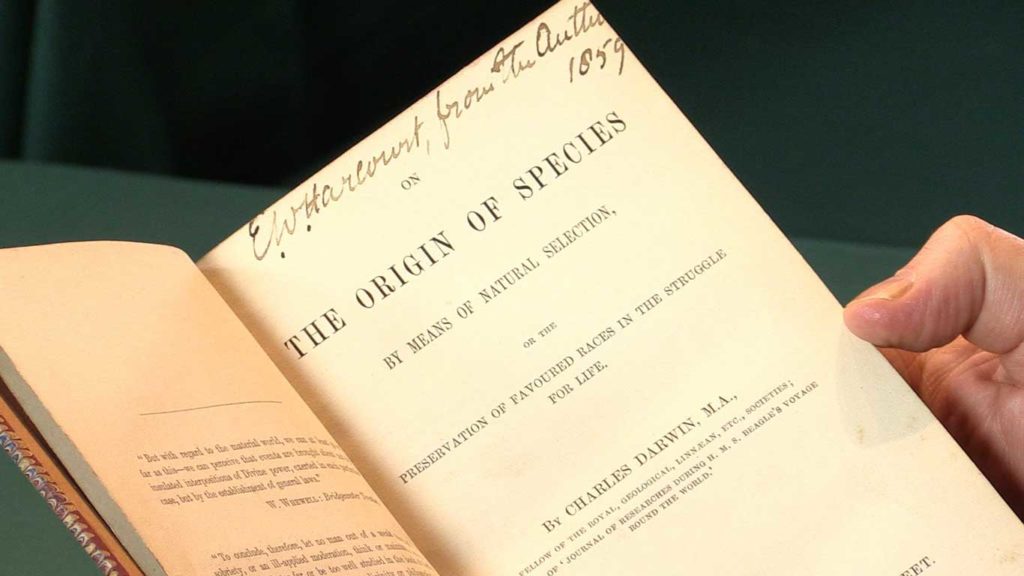
(“Races” was a word used to denote “species” at the time)
V.
And what of Charles Darwin’s “incredible procrastination”?
One scholar, John van Wyhe, finds the discussion irrelevant. He maintains that Darwin “hardly veered from his original plans for working out and publishing his species theory in due course.”
Between 1839 and 1854 Darwin brought out ten books related to his Beagle research—one on zoology, one on coral reefs, three on geology, and four on barnacles, plus his bestselling travel journal.
Darwin wrote in his autobiography, “I gained much by my delay in publishing from about 1839, when the theory was clearly conceived, to 1859; I lost nothing by it.”
Cataloging and analyzing his Beagle specimens was the work of a lifetime, so it took Darwin a lifetime. His species theory was its culmination, but it wasn’t his purpose.
His purpose was sharing his sense of wonder and curiosity, and in that he never procrastinated.
Darwin wrote several books after Origin, including The Formation of Vegetable Mould through the Action of Worms, which also became a bestseller. Emma assisted him with his research. They sat side-by-side in their garden and watched the earthworms turn decay into the stuff of new growth.
Charles Robert Darwin (known as “Bobby” to his wife and family) died in Emma’s arms at age 73. They’d been married forty-three years.
Alfred Wallace, who’d confirmed Darwin’s precedence to their theory and remained his supporter, was one of his pallbearers.
Contrary to urban legend, Darwin never recanted his great work on his deathbed. His sense of wonder wouldn’t let him.
The dreamy dropout who combed the seashore and the keen naturalist who praised the rainforest became the poet-scholar who wrote, at the end of Origin:
“There is a grandeur in this view of life… from so simple a beginning endless forms most beautiful and most wonderful have been, and are being, evolved.”
He might have been referring to his own life. Or mine. Or yours.
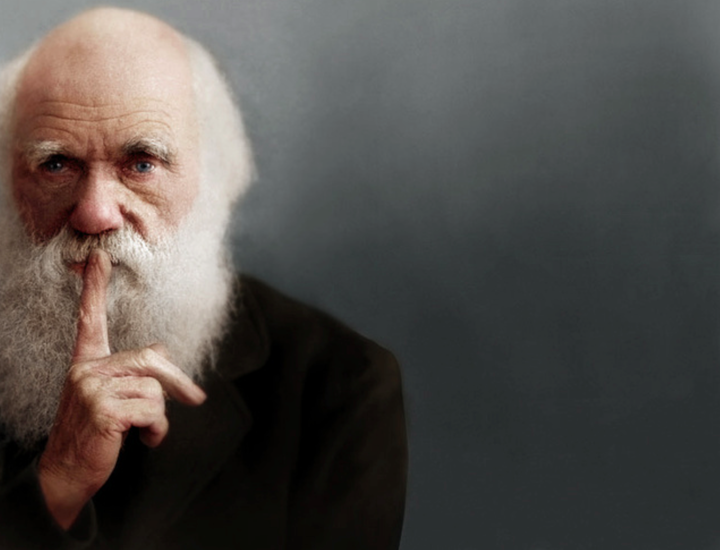
Opening Image: Portrait of Charles and Emma Darwin by George Richard (1840)
